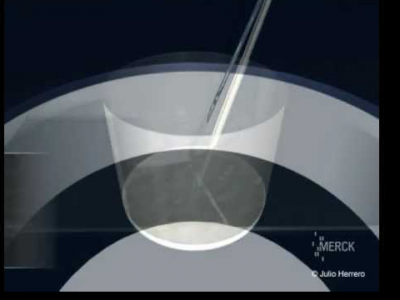How is azoospermia diagnosed?
Azoospermia is defined as the absence of sperm in the ejaculate. Therefore, to diagnose it, it is necessary to analyze the sample of semen obtained by ejaculation. This study is known as seminogram or spermiogram. Other additional tests are also required, such as hormone analysis, physical examination or testis biopsy , which will also allow determining the type of azoospermia.
Below you have an index with all the points that we will discuss in this article.
Index- 1. Seminogram
- 2. Hormone analysis
- 3. Physical exploration
- 4. Testicular biopsy
- 5. Questions from users
- 5.1. Are both types of azoospermia diagnosed in the same way?
- 5.2. Does the testicular biopsy hurt?
- 5.3. How long does it take to get a diagnosis of azoospermia?
- 5.4. Is it possible that they diagnose azoospermia in the first semengram and oligospermia in the second (performed four months later)?
- 6. Recommended reading
- 7. Bibliography
- 8. Authors and collaborators
Seminogram
The seminogram or spermiogram is an analysis of sperm, both at the macroscopic level (color, viscosity, pH ...) and at the microscopic level (concentration, mobility, morphology ...).
To be able to diagnose azoospermia safely and avoid analytical errors, the WHO (World Health Organization) recommends carrying out two seminograms with at least two to three months of interval between one and the other.
The semen sample must be obtained by masturbation after a period of sexual abstinence of between 3 and 5 days, approximately. It is important to obtain the entire sample under proper hygiene conditions. Thus, we avoid possible interferences in the results and facilitate the analysis by the specialists.
To study the amount of sperm, the sample is analyzed under a microscope in a support called the Makler chamber. There is another type of chamber for spermatic counting: the Neubauer camera. The system of both is similar, so the choice of one or the other is the decision of each clinic.
Analysis of sperm under the microscopeIf during the microscopic analysis we count zero sperm, we can indicate that the male suffers from azoospermia. If on the contrary, we see some sperm, we are not facing a case of azoospermia, despite having few sperm, but of oligospermia.
Assisted reproduction, like any medical treatment, requires that you trust the professionalism of the doctors and the clinic you choose, since, obviously, not all are the same.
This "tool" will send you a fully customized report, with detailed information about the treatment you need, the clinics in your area that meet our quality criteria and budgets. It also includes tips that will be very useful when making the first visits to clinics.
In the event of a complete result of azoospermia, the patient is usually asked to allow 2 or 3 months to pass and then the semen is repeated again. In this way the specialists ensure that the absence of sperm is not due to other factors such as stress, poor diet, taking medications, fever processes, etc.
If in the second semengram the result of the sperm count is zero, the diagnosis of azoospermia can already be confirmed. Next, it is necessary to perform other tests such as testicular biopsy to determine the reason why there are no sperm in the ejaculate.
Hormone analysis
Spermatogenesis or sperm production is regulated by hormones such as testosterone or FSH (follicle-stimulating). Any imbalance in the endocrine system (hormonal system) can alter spermatogenesis and eventually prevent the release of sperm.
Analyzing the level of these hormones can help us in the diagnosis of azoospermia:
- FSH: This hormone is produced in the pituitary gland (gland of the base of the brain) and its main function is to stimulate the production of sperm in the testicle. A high FSH value indicates that the population of testicular stem cells (spermatogonia) is reduced, so that sperm production will be low or zero. Thus, it is common for men with azoospermia to have higher values of this hormone.
- Testosterone: this hormone, produced in the testicle, follows the pattern contrary to FSH. If spermatogenesis is not done, azoospermic men have lower testosterone levels than usual.
In general, if the hormonal analysis shows high values of FSH and low testosterone, we suspect that the azoospermia discovered in the semen is a secretory type. This means that the absence of sperm is due to the lack of sperm production, that is, to the alteration of spermatogenesis.
Analysis of hormones in manIf the blood test determines normal hormonal levels, it is most likely that we do not see sperm in the ejaculate due to an obstruction in the spermatic channels that carry the sperm from the testicle, where they are manufactured, to the outside.
Generally the obstruction appears at the level of the epididymis or the vas deferens. This is what we know as obstructive azoospermia.

Comments
Post a Comment